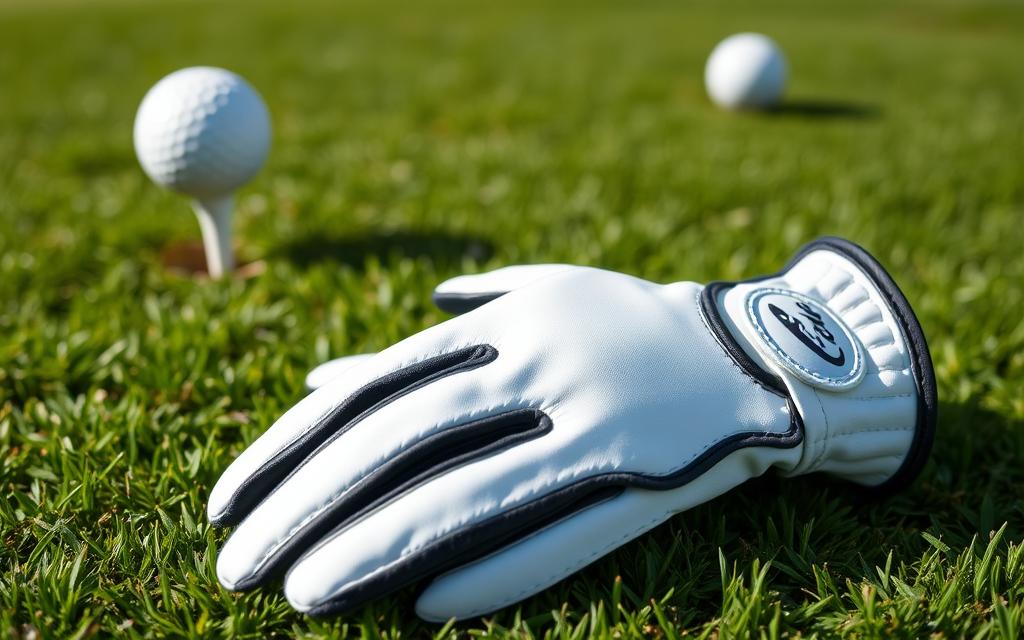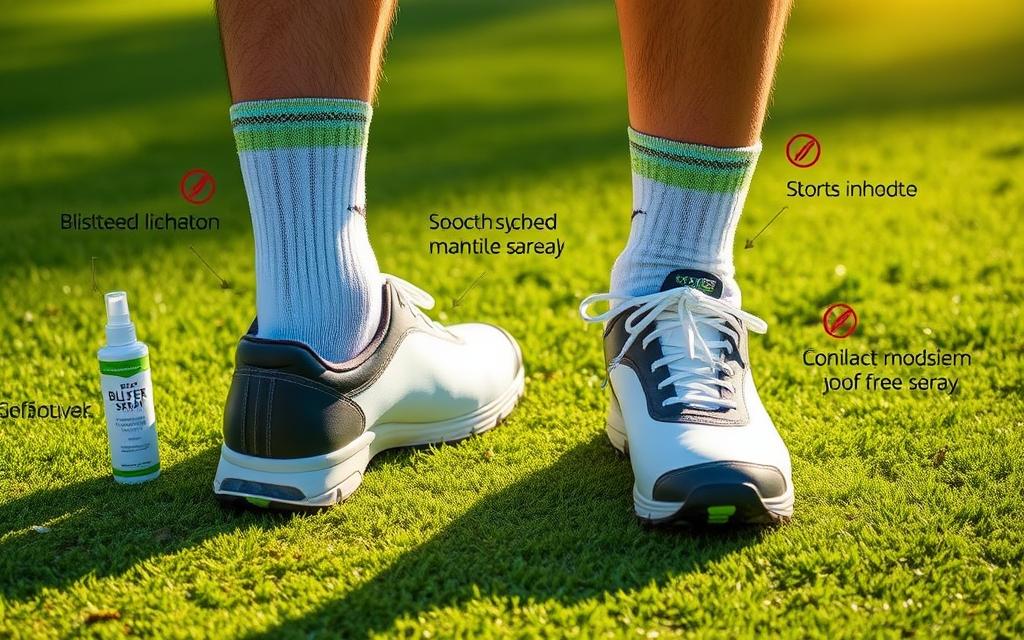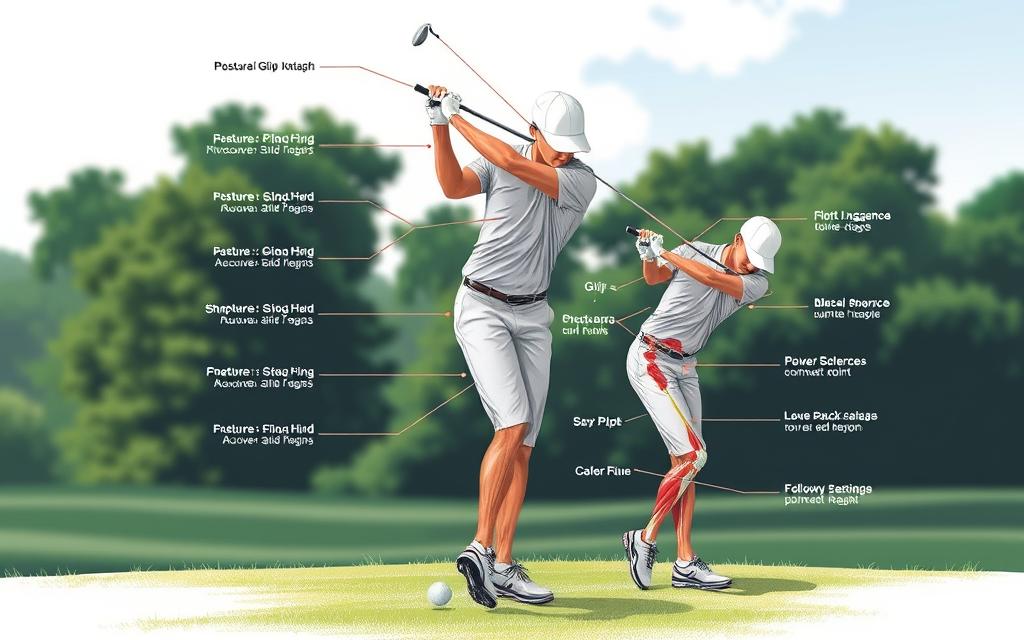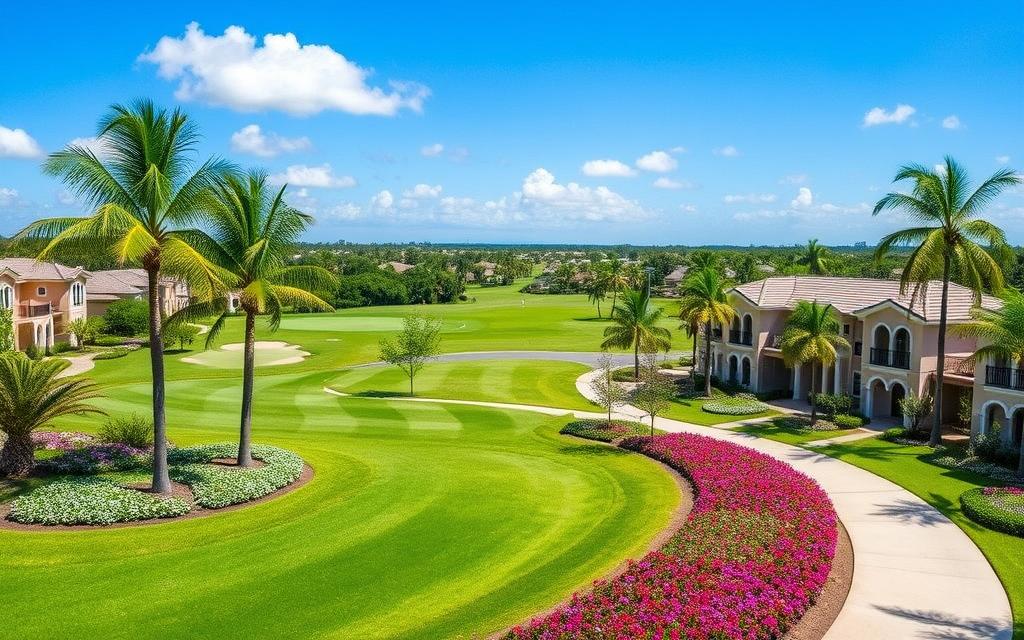Are you a golf fan who gets blisters? You’re not alone. Blisters can hurt and make playing golf less fun. But, there are ways to stop blisters from ruining your game. We’ll look at why blisters happen and how to keep your skin safe on the course.
Key Takeaways
- Understand the common causes of blisters in golf, including improper grip techniques and ill-fitting equipment
- Learn how to choose the right golf gloves and shoes to minimize friction and pressure on your skin
- Discover how proper swing mechanics and grip adjustments can help prevent blister formation
- Explore skin care and hydration practices that support long-term blister prevention
- Recognize the early signs of blisters and know when to seek medical attention
Understanding Blisters and Their Causes
Blisters are a common problem for golfers. They can cause pain and mess up your game. Knowing what blisters are and why they happen is key to avoiding and dealing with them.
What Are Blisters?
Blisters are fluid-filled pockets on the skin. They form when there’s too much friction or pressure. They help protect the skin from getting worse.
Why Do Blisters Occur During Golf?
Golfers often get blisters because of the sport’s repetitive and high-impact nature. The constant grip on the club and the friction during the swing can cause blisters. This is why friction reduction and callus formation on the hands are common.
Common Risk Factors for Golfers
- Poorly fitted or inappropriate golf gloves
- Improper grip technique leading to excessive friction
- Inadequate foot care and ill-fitting golf shoes
- Prolonged exposure to moisture and sweat during gameplay
- Existing callus formation on the hands or feet
Knowing these risk factors helps golfers prevent blisters. It also helps them stay at their best on the course.
Choosing the Right Golf Gloves
Choosing the right golf gloves is key to avoiding blisters. The right fit and material are important. They keep your hands comfortable and safe during your game.
The Importance of Proper Fit
Gloves that are too loose can cause blisters. Gloves that are too tight can hurt your hands. You want a glove that fits just right, snug but not too tight.
Try on different sizes and styles. Find the perfect glove for your hands.
Material Considerations
The material of your golf gloves matters too. Leather gloves are popular for their soft fit. Synthetic materials like spandex or microfiber are also good. Think about what you like and the weather when choosing.
How to Break in Golf Gloves
- Wear your new gloves for short times before playing to break them in.
- Flex and stretch the material to fit your hand.
- Don’t wash or dry them too much to keep them soft.
- Store them right to keep them flexible and last longer.
Invest in the right golf gloves and break them in well. This way, you can play golf without blisters. Wear comfortable shoes too for more comfort.

“Finding the perfect golf gloves is essential for preventing blisters and maintaining a secure grip on the club.”
Footwear Matters: Selecting Golf Shoes
Choosing the right shoes is key to avoiding blisters in golf. A good pair of proper golf shoes can greatly improve your comfort and play. Let’s look at what to consider when picking the best golf shoes for you.
Key Features to Look For
Good golf shoes should support, cushion, and breathe well. This keeps your feet comfy all game. Look for shoes with:
- Flexible, non-slip soles for stability and traction
- Waterproof or water-resistant materials to keep your feet dry
- Lightweight, breathable uppers to reduce heat and moisture buildup
The Role of Socks in Preventing Blisters
Your moisture-wicking socks are also important for blister prevention. Choose socks that wick moisture away. This keeps your feet dry and reduces friction that can cause blisters.
Tips for Breaking in New Golf Shoes
Even the best comfortable footwear for golf can cause blisters if not broken in right. Here’s how to break them in smoothly:
- Wear your new shoes around the house for a few hours at a time to gradually break them in.
- Consider wearing your new shoes for short practice sessions or range sessions before taking them out on the course.
- Pay attention to any areas of friction or discomfort and address them promptly to prevent blisters.
By choosing the right golf shoes, socks, and breaking them in right, you can lower your risk of blisters. This makes your golf game more enjoyable and comfortable.
Technique and Grip Adjustments
Preventing blisters on the golf course is not just about the right equipment. Your technique and grip are key too. By improving your swing and grip, you can play better and keep your hands blister-free.
Proper Grip Techniques
Your grip affects how much friction your hands feel. Make sure it’s not too tight. A relaxed grip lets your hands move freely without pain.
Try different grip styles like interlocking or overlapping. Find what feels natural and comfy for you.
How Swing Mechanics Can Contribute to Blisters
- Bad swing mechanics, like an aggressive swing, can cause blisters.
- Fast club head speed also raises the risk of blisters. This is because the club moves quickly against your skin.
- Smooth, controlled swings with steady club head speed help avoid blisters.
By focusing on your swing and grip, you can cut down on friction. This makes your golf game more enjoyable and blister-free.
| Proper Grip Technique | Swing Mechanics to Prevent Blisters |
|---|---|
| – Relaxed, neutral grip – Experiment with different grip styles (interlocking, overlapping) – Avoid a tight, tense grip |
– Smooth, controlled swing – Consistent club head speed – Minimize unnecessary movements |
Good golf technique and grip changes can prevent blisters. This makes your game more fun and comfortable.
Hydration and Skin Care Practices
Keeping your body hydrated and taking care of your skin is key to avoiding blisters on the golf course. These steps help prevent painful foot problems. They make your golf game more fun and comfortable.
Staying Hydrated on the Course
Not drinking enough water can harm your body and skin. Always carry a water bottle and drink often. Even if you’re not thirsty, it’s good to drink water. This keeps your skin soft and lowers blister risk.
Pre-round Skin Preparation
- Put a thin layer of petroleum jelly or blister cream on your heels, toes, and foot balls.
- Wear socks that wick away moisture, like polyester or merino wool. They help prevent blisters.
- Make sure your golf shoes fit well before playing. This avoids blisters from tight spots.
Post-round Care for Blisters
Even with care, blisters can happen. If you see a blister, treat it right away. Clean it, put on a bandage or blister dressing, and don’t press on it until it heals. This helps prevent the blister from getting worse and keeps it from getting infected.
Focus on staying hydrated, preparing your skin before playing, and caring for blisters after. These steps improve your foot health and lower blister risk. They let you enjoy your golf game more, without pain.
Recognizing the Early Signs of Blisters
As a golfer, taking care of your feet is key. Spotting blisters early can stop them from ruining your game. Knowing the signs and when to see a doctor is vital for your foot health for golfers.
Common Symptoms to Watch For
Look out for redness, tingling, or a burning feeling first. A small, fluid-filled sac will form as a blister grows. This is your skin’s way of reacting to pressure and friction.
Be careful of any tender or sore spots on your feet. These are early signs of a blister. Catching these signs early can help prevent big problems.
When to Seek Medical Attention
Small blisters can be treated at home. But, know when to see a doctor. If a blister hurts a lot, gets bigger, or shows signs of infection, get help.
Some blisters can mean a bigger health issue, like diabetes. If you’re worried about your feet or a blister, talk to a podiatrist or your doctor.

Proactive Measures for Long-Term Relief
To stay comfortable on the golf course, it’s key to take care of your feet. Check your feet for any irritation or hot spots. Then, gently remove dead skin to prevent blisters.
Regular Foot Care Routines
Spending a few minutes each day on foot care can greatly improve your golf game. Moisturize your skin and trim your nails. This keeps your feet healthy and ready for golf.
Incorporating Rest Days to Heal
It’s also important to give your body time to heal. Taking rest days from golf lets your skin fix any issues. Listening to your body helps avoid long-term problems.
Using Blister Prevention Products
Using blister prevention products can help too. Things like special socks, lubricants, and bandages reduce friction and protect your skin. These can keep you playing golf without pain.


